Setting up a hookah can look complicated, but with clear steps, it’s simple and enjoyable. The main thing is to know each part and put everything together the right way so you get smooth, tasty smoke. This guide takes you from prep to your first pull and helps you set up for a great session.
A good setup is the base of a solid session. It stops problems like harsh smoke or weak flavor. You want an airtight system so heat cooks the shisha evenly and brings out the taste. Whether you’re experienced or new to hookah, learning this setup is very important.
And if you want to upgrade your gear, check out a wide range of hookah vases and other accessories to make it your own!
What Is a Hookah and How Does It Work?
A hookah is a traditional water pipe for smoking, with roots in the Middle East and South Asia. It dates back more than 500 years, with early versions appearing in India during the Mughal period.
The idea, often linked to physician Abu’l-Fath Gilani, was to pass smoke through water to make it smoother. From India, it spread to Persia, Turkey, and Egypt, and each place added its own style and flavors.
Today, people use hookahs around the world for social gatherings and cultural connection. The key is how it cools and filters smoke through water, giving you a smoother, more aromatic experience than direct tobacco smoke. Knowing how the parts work together helps you set up your own session the right way.
What Are the Main Parts of a Hookah?
A hookah has several parts that work together to give you smooth smoke. Here are the essentials:
- Bowl: Holds the shisha (flavored tobacco). Usually ceramic or clay. It’s heated from the top.
- Coal Tray: Sits under the bowl. Holds hot coals and catches ash.
- Stem (Shaft): The main body that connects bowl, base, and hose. Includes the bowl stem (under the bowl) and the stem heart (the thicker section with the hose port and purge valve).
- Hose Port (Hose Adaptor): Where the hose plugs in to pull smoke.
- Release/Purge Valve: Lets you blow out stale smoke. It usually has a ball bearing that seals while you inhale and opens when you purge.
- Downstem: The lower part of the stem that dips into the water. Smoke passes through it into the water.
- Base (Vase): The glass or acrylic bottom that holds water and collects smoke.
- Hose: The tube you inhale through, with a connector at one end and a handle at the other.
- Grommets/Seals: Rubber or silicone rings that make airtight joints at the base, bowl, and hose. Without them, air leaks will ruin the smoke.
Each part has a job. Knowing them helps with setup and fixing issues.
How Does Smoke Travel Through the Hookah?
The path of smoke in a hookah turns hot tobacco vapor into smooth, flavorful clouds. Heat from coals on top of the bowl warms the shisha. The glycerin and flavorings vaporize and create thick smoke.
The smoke goes down through the bowl stem, into the main stem, then through the downstem into the water. The water cools and partly filters the smoke, which makes it feel smoother. After bubbling, smoke gathers in the base. When you inhale, it travels from the base, through the hose, and into your lungs.
What Equipment and Supplies Do You Need to Set Up a Hookah?
Before you start, gather everything you need. Having all your parts ready makes setup quick and easy and helps your session go well. Think of it like setting up your tools before cooking a meal — every piece matters.
For premium hookahs, molasses, and accessories that make preparation effortless and your experience exceptional, visit Shisha Boutique — the go-to destination for high-quality shisha products and expert advice.
Types of Hookahs and Size Differences
Hookahs come in many shapes, sizes, and designs. Some are small and easy to carry. Others are large and decorative. Bigger hookahs often have longer downstems and larger bases, which can cool smoke better and give a smoother pull because there’s more water and air. Smaller hookahs are faster to set up, easier to clean, and great for solo use or small groups.
You’ll also see differences in materials. Traditional models often use metal with glass bases and classic designs. Modern models may use stainless steel, silicone, and acrylic for strength and easy upkeep. No matter the style, the basic setup and use are similar, so you can get great results with either type.
Choosing the Right Hose and Bowl
The hose and bowl affect flavor, airflow, and comfort more than most other parts.
- Hoses: Older leather hoses can’t be washed and may hold old flavors. Modern hoses are often silicone or other washable materials. Silicone hoses are flexible, long-lasting, and easy to clean. When picking a hose, think about length, handle comfort, and whether it’s washable. A longer hose can cool smoke more, and a comfy handle feels better in hand.
- Bowls: The bowl type changes how your shisha heats.
- Egyptian/Traditional: Clay with small holes at the bottom. Good for many shisha types and even heating.
- Phunnel: One raised hole in the center. Keeps juices in the bowl for cleaner setup and longer flavor. Great for wet shisha.
- Vortex: Several holes around a central spire. Good airflow and juice control.
- Glazed vs Unglazed: Glazed bowls are easy to clean and help stop flavor carryover. Unglazed bowls can “season” over time and may boost certain flavors.

Pick a bowl that matches your shisha and heat method. Some bowls work best with heat management devices (HMDs) instead of foil.
Selecting Shisha Tobacco and Charcoal
Shisha and coals are the heart of your session. They control flavor, heat, and smoke.
- Shisha Tobacco: Made from tobacco leaves, molasses or honey, glycerin, and flavorings. Choose flavors you like, from fruit mixes like Double Apple to mint or spice blends. Texture matters too-wet shisha often works best in phunnel bowls so juices don’t drip. Always stir the shisha in the container so juices spread evenly. Let it sit for about 5 minutes before packing to help the mix settle.
- Charcoal: Your coals control heat and taste.
- Natural Coals (Coconut): Recommended for clean flavor. They burn longer and hotter, make less ash, and don’t smell. Light them on an electric burner or gas stove for 5-10 minutes until fully red all around.
- Quick-Lighting Coals: Light fast with a lighter due to chemicals. Handy but can taste chemical and burn out quicker. If you use them, wait until they’re fully covered in ash before placing on the bowl to reduce off-taste.
- Good natural coals give better flavor and steadier heat.
Optional Accessories for an Improved Experience
These extras can make your sessions easier, cleaner, and more consistent:
- Heat Management Devices (HMDs): Sit on top of the bowl and replace foil. They help control heat more evenly and often make sessions longer and smoother.
- Foil Pokers/Punches: Make neat, even holes in foil for good airflow and steady heat.
- Tongs: For moving hot coals safely and placing them precisely.
- Mouth Tips: Use disposable tips when sharing for hygiene.
- Cleaning Brushes and Solutions: Special brushes help scrub the stem and base. Gentle cleaners help remove buildup.
- Base Protector: Adds stability to wobbly bases and helps prevent spills.
These are optional but can improve safety, flavor, and consistency.
Step-by-Step Guide: How to Set Up Your Hookah the Right Way
Now that you know the parts and supplies, let’s go through the setup steps. This guide will help you put everything together the right way, from cleaning to coal placement, so you get a solid session every time.
1. Clean Your Hookah Components
Start with a clean hookah. A clean setup prevents old flavors and keeps airflow clear. This also helps with hygiene and better taste.
Take everything apart: bowl, tray, stem, hose, and base. Wash the base, stem, and any washable hose with warm water and mild, unscented dish soap. Avoid harsh chemicals. Rinse very well to remove all soap. Empty and scrub the bowl to remove burnt bits. If your hose isn’t washable (like leather), blow air through it to clear debris, but don’t get it wet.
Tips for Thorough Cleaning and Hygiene
Use hookah brushes for the inside of the stem and base to reach tight spots and remove buildup. Focus on the downstem since most smoke passes through it. Let all parts air dry fully before putting them away or using them again. Moisture left inside can cause bad smells. Clean after every session so residue doesn’t harden and affect taste later. A clean pipe gives better flavor and lasts longer.
2. Add Water to the Hookah Base
Next, fill the base with water. The water cools and filters smoke, so the level matters.
Use cold or room-temperature water. Some people add ice for cooler smoke, but room temp works fine. The key is how much water you use.
How Much Water Should You Use?
Fill the base so the tip of the downstem sits about 1 inch (2-3 cm) under the water. Put the stem in and adjust the level until you get that depth. You want enough water for bubbling and filtering without making it hard to pull. Too much water can make it hard to inhale or splash into the hose. Too little water gives harsher smoke.
Test by inhaling from the hose port (without the hose attached): you should hear light bubbling. No bubbles? Add water. Water in your mouth? Pour some out. Use plain water only, since other liquids can damage parts and change flavor.
3. Assemble the Hookah and Attach Gaskets
With the base filled, put the clean parts back together. Tight, airtight joints are very important. Without them, you won’t get good smoke.
Check the base grommet on the stem. Insert the stem into the base so the grommet seals tightly. The stem should feel steady. If it’s loose, try a thicker grommet or wrap a bit of tape on the grommet for a tighter fit. Some modern models screw together instead of using a base grommet-follow your model’s manual for that style.
Making an Airtight Seal
Every joint needs to be tight. Place the coal tray on the stem. If your model has a screw-on bowl port, put the tray in place before tightening. Check all grommets (base, bowl, hose). They shouldn’t be cracked or worn and should fit snugly. A tiny bit of water or a drop of dish soap can help slide a tight grommet into place. Replace worn gaskets as needed to keep everything sealed.
4. Connect the Hose and Check Airflow
Attach the hose to the hose port. This joint must be airtight too.
If your hose has a gasket on the connector, make sure it’s seated well. If not, place a hose grommet in the port. Push the hose connector in firmly so it doesn’t wobble. You want a full seal to stop outside air from sneaking in.
Detecting and Fixing Leaks
Small leaks can ruin airflow. Do a quick test: cover the bowl port (top of the stem) with your palm, then inhale from the hose. If you feel resistance and hear bubbling, your setup is sealed. If you can pull air easily or hear a hiss, you have a leak.
Common causes and fixes:
- Loose Gaskets: Re-seat all grommets at the base, hose, and bowl.
- Worn Gaskets: Replace cracked or flattened ones.
- Missing Ball Bearing: Check the purge valve. The ball should be present and move freely when you purge but seal when you inhale.
- Damaged Hose: Look for holes or tears. Block one end and blow into the other; if air escapes, replace the hose.
After any fixes, test again to confirm the seal.
5. Prepare and Pack the Hookah Bowl
How you pack the bowl is one of the most important parts of your setup. It affects heat, airflow, flavor, and cloud size.
Selecting and Fluffing Shisha Tobacco
Pick your flavor and stir the shisha in its container so juices spread evenly. Take out what you need and gently break apart clumps with your fingers or a fork. Keep it light and airy, not packed into a solid lump.
Let the shisha sit for about 5 minutes after fluffing so the mix settles. Avoid storing shisha in the fridge; quick temperature changes can cause it to burn faster when heated.
How to Pack the Bowl for Better Smoke
Sprinkle the fluffed shisha into the bowl. Don’t press hard. You want a light, even layer with good airflow. Lightly level the top with your fingers or a fork.
Leave a small gap between the shisha and the top edge of the bowl-about 1 mm. This stops the tobacco from touching the foil or HMD, which would burn it. If it’s too high, remove a bit. Some dark leaf tobaccos can use a denser pack, but for most shisha, a fluffy pack works best.
6. Cover the Bowl with Foil or a Heat Management Device
After packing, cover the bowl with foil or set an HMD on top. Both keep coals from touching the shisha directly and help heat it evenly.
For foil, use a square piece big enough to wrap tightly around the bowl. Heavy-duty foil is a good pick because it’s sturdy and helps with steady heat. Pull it tight like a drum so it doesn’t sag. Many people put the shiny side up. Make sure the foil is food-safe.
If you use an HMD, place it on the bowl so it fits well. It shouldn’t press down into the shisha. If it does, pat the tobacco down slightly to create space.
How to Puncture Foil for Even Heating
If you use foil, poke small holes with a toothpick or poker. The holes let heat and air move through the bowl.
Make evenly spaced holes in rings or a spiral from the edge toward the center. Leave a little space between holes. Too many holes can overheat the shisha; too few can choke airflow. Aim for a balanced pattern for steady cooking.
7. Light and Place Hookah Coals
Coals heat the shisha, so lighting and placing them the right way is very important. Don’t rush this step.
Natural vs Quick-Lighting Charcoals
Two common types of coals:
- Natural (Coconut) Coals: Best for clean flavor and steady heat. Light them on a burner or gas stove for 5-10 minutes. Flip halfway. They’re ready when glowing red on all sides with a thin layer of ash.
- Quick-Lighting Coals: Ignite fast with a lighter due to added chemicals. Handy but can taste chemical and don’t last as long. Light them fully until they stop sparking and are covered with ash. Let them sit a minute or two before use.
Always make sure coals are fully lit before using them. Partially lit coals taste bad and can produce harmful gases.
Managing Coal Placement for Best Flavor
Move hot coals with tongs. On foil, do not set coals in the middle. Place them around the outer edge so heat spreads in evenly. On an HMD, spread coals evenly inside.
Let the bowl heat for about 5 minutes before your first pull. During the session, flip and rotate coals and tap off ash to keep heat steady and prevent hot spots.
8. Attach the Bowl and Finalize Setup
Now attach the bowl to the stem. Put the bowl grommet on and press the bowl down firmly so it doesn’t wobble. A loose bowl can leak air and is unsafe with hot coals on top.
Do a final check on all joints: stem to base, hose to port, and bowl to stem. Give a gentle pull on the hose to confirm it’s tight and stable. If you’ve followed each step, you’re ready to enjoy the session you prepared with care.
How to Start Smoking and Enjoy Your Session
With your hookah set up carefully, it’s time to smoke. The first few pulls and how you manage heat will help you get the most flavor and smooth smoke.
Inhaling Techniques for Smooth Smoke
Start with short, light pulls. This warms the bowl gradually and helps avoid burning. After a few minutes, you should see thick smoke in the base and smooth draws through the hose. If smoke is slow to build, take a couple of quicker puffs, then go back to steady pulls.
Keep your inhales slow and even. Big, hard pulls can overheat the bowl and burn the tobacco. Take your time, enjoy the taste, and pause here and there to avoid headaches or discomfort.
How to Manage Heat and Prevent Harshness
Heat control continues through the whole session and has a big impact on flavor:
- Warm-Up: Let coals sit on the bowl for about 5 minutes before strong pulls.
- Rotate Coals: Every 10-15 minutes, flip and rotate them. Tap off ash to keep them burning well.
- Adjust Coal Count: Harsh or burnt taste means too much heat. Remove a coal or move them closer to the edge. Thin smoke means add a coal or move them slightly inward (but not in the center).
- Purge: If smoke feels harsh, blow gently into the hose to clear stale smoke from the base.
With practice, you’ll learn the signs of too much or too little heat and keep your session steady.
Flavor Tips for a Longer Lasting Session
Try these tips to keep flavor strong and extend your session:
- Good Pack: Use a fluffy, airy pack with a small gap under the foil or HMD.
- Quality Shisha and Coals: Better shisha and natural coals give cleaner taste and longer burn.
- Easy Pulls: Don’t inhale too hard or too fast. It burns the shisha quicker.
- Watch the Heat: Move or reduce coals if flavor drops or harshness creeps in.
- Keep It Clean: A clean pipe stops old flavors from mixing with new ones.
Follow these habits to get rich flavor and steady clouds session after session.
Common Hookah Setup Problems and How to Fix Them
Even with care, things can go wrong. Most issues are simple and easy to fix once you know what to check.
Weak Smoke or No Smoke
Thin or no smoke usually comes from one of these:
- Problem: Air Leaks. Outside air is getting in.
- Fix: Re-seat all grommets (base, hose, bowl). Check the purge valve for a missing or stuck ball bearing.
- Problem: Insufficient Heat. Coals aren’t hot enough, or there aren’t enough.
- Fix: Light coals fully (glowing all around). Add another coal and let the bowl warm for a few minutes.
- Problem: Improper Bowl Pack. Too loose or too wet.
- Fix: Pack lightly and evenly. If shisha is very juicy, pat it once with a paper towel before packing.
- Problem: Not Enough Holes in Foil.
- Fix: Add more evenly spaced holes for better airflow and heat.
Harsh or Burnt Flavor
Harsh taste means the shisha is getting too hot.
- Problem: Too Much Heat.
- Fix: Remove one coal. Move others to the edge. Lift the HMD briefly to cool. Purge the base.
- Problem: Shisha Touching Foil/HMD.
- Fix: Keep about 1 mm space between shisha and foil/HMD. Pat down gently if needed.
- Problem: Over-Packed Bowl.
- Fix: Next time, use a fluffier pack. For now, rotate coals more often and purge.
Difficulty Pulling Air Through the Hose
If draws feel tight or blocked, check these:
- Problem: Too Much Water.
- Fix: Lower the water level so the downstem is only about 1 inch under.
- Problem: Clogged Hose.
- Fix: Blow through it to clear debris. Wash if it’s a washable hose.
- Problem: Over-Packed Bowl or Too Few Holes.
- Fix: Pack looser next time. For now, add more foil holes.
- Problem: Stuck Ball Bearing.
- Fix: Check the purge valve and free the ball if it’s stuck.
Water Bubbles Into the Hose
If water reaches the hose, try this:
- Problem: Too Much Water.
- Fix: Pour some out until the downstem sits about 1 inch under the water.
- Problem: Pulling Too Hard.
- Fix: Take softer draws.
Check each area step by step to get your session back on track.
Tips for Cleaning and Maintaining Your Hookah
Clean your hookah after every session. This keeps flavors pure, improves airflow, and helps your pipe last. Skipping cleaning can cause flavor carryover and clogs.
How Often Should You Clean Each Part?
Here’s a simple schedule:
- Base and Stem (including Downstem): Rinse with warm water after every session. Use mild soap and brushes to scrub inside, especially the downstem.
- Bowl: Clean after each use to remove burnt residue and prevent old flavors mixing with new ones.
- Hose: If washable, rinse every 1-2 sessions or when changing flavors. For non-washable hoses, blow out debris only.
- Coal Tray: Wipe off ash after each session.
- Full Deep Clean: Every 5-10 sessions, scrub all parts well, soak if needed, and check grommets for wear.
Best Cleaning Methods for Longevity
Use these habits to help your hookah last and perform well:
- Clean Right Away: It’s easier while residue is fresh.
- Warm Water and Mild Soap: Avoid harsh cleaners that can damage parts or leave smells.
- Use Proper Brushes: They reach narrow spots in the stem and curves in the base.
- Rinse Very Well: Remove all soap so it doesn’t affect taste.
- Air Dry Fully: Dry parts completely to avoid mildew or odors. Hang hoses to prevent water pooling.
- Check Grommets: Replace worn seals to prevent leaks.
- Set Up a Cleaning Spot: A dedicated area makes the process faster and tidier.
Regular cleaning keeps flavors clean and protects your hookah over time.
Safety Precautions and Health Considerations
Hookah can be relaxing and social, but safety comes first. Know the risks and reduce them to keep everyone safe.
Coal Safety and Carbon Monoxide Dangers
Coals can produce carbon monoxide (CO), a gas you can’t see or smell that can be deadly at high levels.
- Good Ventilation: Smoke outside or in a room with open windows and airflow. Never smoke in small, closed rooms.
- Fully Lit Coals: Wait until coals are glowing red before use. Partially lit coals release more harmful gases.
- CO Detectors: If you smoke indoors often, consider a detector nearby.
- Handle Safely: Use tongs and place coals on a heat-proof surface.
CO poisoning signs include headache, dizziness, nausea, weakness, and confusion. If anyone shows these signs, get fresh air right away and seek help if symptoms continue or worsen.
How to Reduce Risks During Use
Other tips for safer sessions:
- Stay Hydrated: Drink water during your session.
- Take Breaks: Pause often to limit continuous smoke intake.
- Use Personal Mouth Tips: Especially in groups, for hygiene.
- Keep It Clean: Regular cleaning lowers bacteria and residue.
- Nicotine Awareness: Shisha contains nicotine and can be addictive. Use in moderation.
- Avoid Alcohol: Alcohol can affect judgment and raise risks during sessions.
- Know the Health Risks: Water cools smoke but doesn’t remove all toxins. A long hookah session can expose you to a lot of smoke, with health risks similar to other tobacco use.
Follow these steps to enjoy your sessions more safely.
Hookah Setup FAQs
Even with a full guide, questions come up. Here are quick answers to common setup questions.
Why Is My Hookah Not Producing Smoke?
Common causes include:
- Air Leaks: Check all grommets at the base, hose, and bowl. Also check the purge valve for a missing or stuck ball bearing.
- Insufficient Heat: Make sure coals are fully lit and hot. Add one more if needed and warm the bowl for 5 minutes.
- Improper Bowl Pack: If packed too tight, airflow is blocked; if too wet, it struggles to vaporize. Use a fluffy pack and leave a small gap under foil/HMD.
- Too Little Water: Less common, but make sure the downstem is about 1 inch under the water.
- Too Few Foil Holes: Add more evenly spaced holes for better heat and airflow.
What Water Alternatives Can I Use in My Hookah?
Plain water is standard and recommended. Other liquids can harm parts or leave sticky residue and odors. For best results and to protect your pipe, stick with water.
If you want to try something different, some people use:
- Ice Water: Safely cools smoke for a smoother draw.
- Milk (Diluted): Some say it makes thicker clouds, but it can spoil fast and is hard to clean.
- Fruit Juices (Diluted): May add a light aroma, but juices are sticky, can ferment, and are tough to clean.
- Alcohol: Not recommended. Vapors can be inhaled, cause fast intoxication, and are flammable.
If you experiment, dilute heavily, clean right after, and know the risks. For most people, ice water is the best choice.
How Long Does a Typical Hookah Session Last?
Most sessions last 45 minutes to 1.5 hours. It depends on:
- Bowl Size and Pack: Bigger, well-packed bowls last longer.
- Shisha Type: Some brands and dark leaf tobaccos handle heat longer.
- Coal Type and Management: Natural coals last longer. Rotating and ashing coals helps extend sessions.
- Number of Smokers: More people means more pulls and a faster burn.
- Pulling Style: Gentle, steady pulls help shisha last. Hard pulls shorten the session.
With a good setup, quality shisha, natural coals, and steady heat control, you can reach close to two hours with consistent flavor and thick clouds.

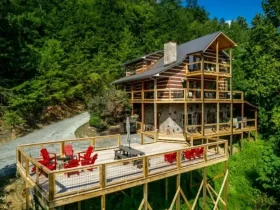
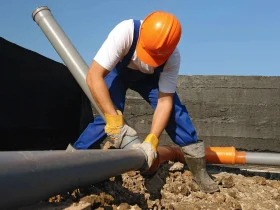









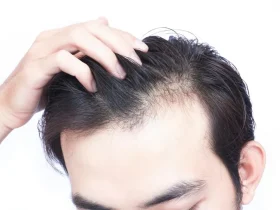






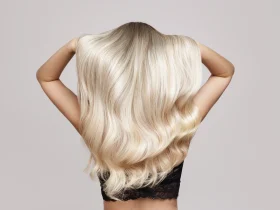


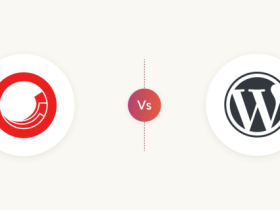

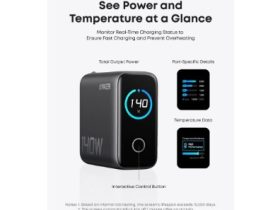













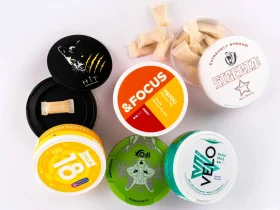





Leave a Reply